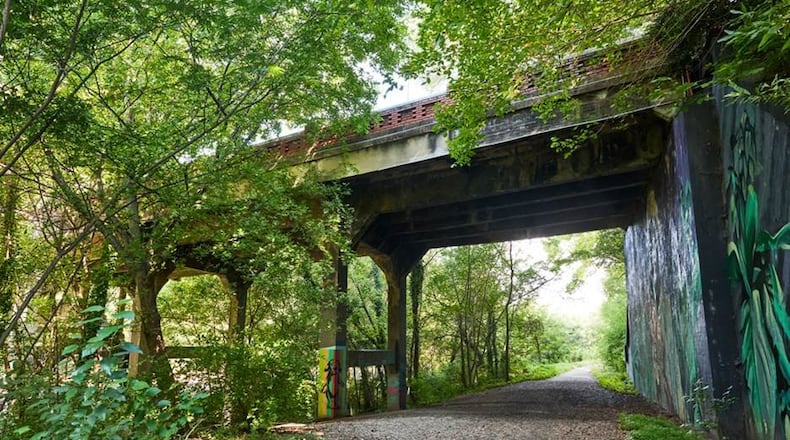Atlanta is set to receive $25 million from the federal government to ramp up construction of Beltline trails on the northeast side of the city.
The funds mark the largest federal grant in Beltline history and will go toward expanding more than 2 miles of trails between Armour/Ottley and Lindbergh areas. The additions will be the first time the Beltline will connect to a MARTA station — which will be at Lindbergh Center.
“The Northeast segment of the Beltline is a huge undertaking, but Atlanta does big and we do it well — and we do it together,” Atlanta Mayor Andre Dickens said in a statement.
The USDOT Rebuilding American Infrastructure with Sustainability and Equity grant includes money for pedestrian safety upgrades like improved bridges, crosswalks, lights, security cameras and stormwater infrastructure along Segment 3 of the Beltline and surrounding connector trails.
Credit: Courtesy of the Atlanta BeltLine, Inc
Credit: Courtesy of the Atlanta BeltLine, Inc
Georgia’s federal Democrats cheered the investment on Tuesday, calling it a “historic” contribution to a larger transportation vision for the city.
“The Beltline is a transformative Metro Atlanta infrastructure project to upgrade quality of life and spur equitable development across the region,” U.S. Sen. Jon Ossoff said. “Imagine families walking and biking, restaurants, retail, and small businesses, green spaces and trail connectivity across Metro Atlanta. This is a huge step forward toward that vision.”
Atlanta Beltline, Inc. is in charge of completing the 22-mile, multi-use trail loop around the city by the end of 2030. By the end of 2024, 80% of the mainline Beltline trail loop is expected to be complete or under construction, according to the nonprofit.
On top of federal investment, the Beltline is also working with the largest budget in history at $153 million for the next fiscal year. The nonprofit also wants to create or preserve 5,600 affordable housing units along the trail by the end of 2030.
Unlike most of the Beltline, the northeast trail does not follow old railroad tracks and marks a unique place in the city where an interstate, state roads and regional transportation lines converge. The planned segments will prioritize pedestrian and cyclist crossings of major transportation lines.
Clyde Higgs, president and CEO of Atlanta Beltline, Inc., said the newest funds for expansion in northeast neighborhoods is a step toward creating a more equitable city by increasing access for residents who utilize the corridor.
“With the incredible support of the USDOT and our congressional delegation, we’re creating a city that allows people to move within it, creating new access points that lead to jobs, housing, and activities,” he said.
About the Author
Keep Reading
The Latest
Featured




